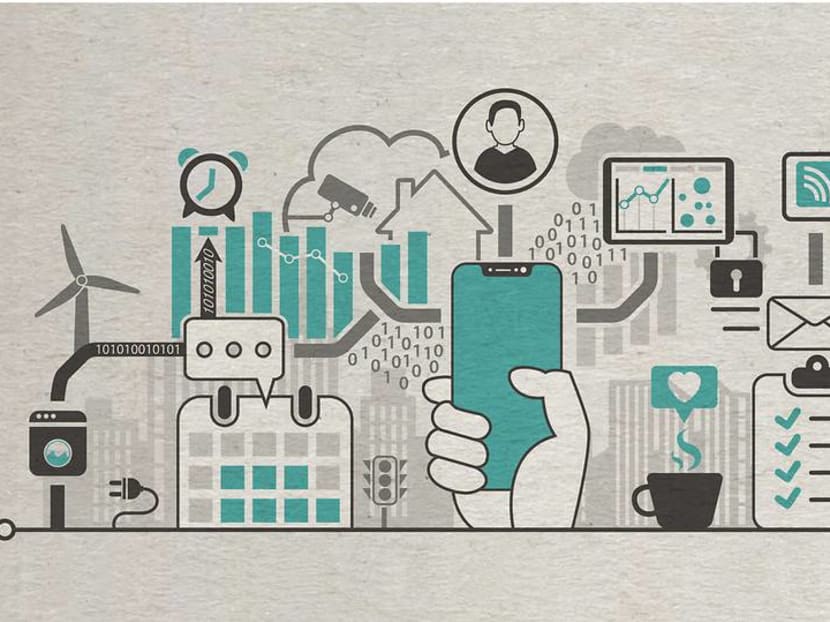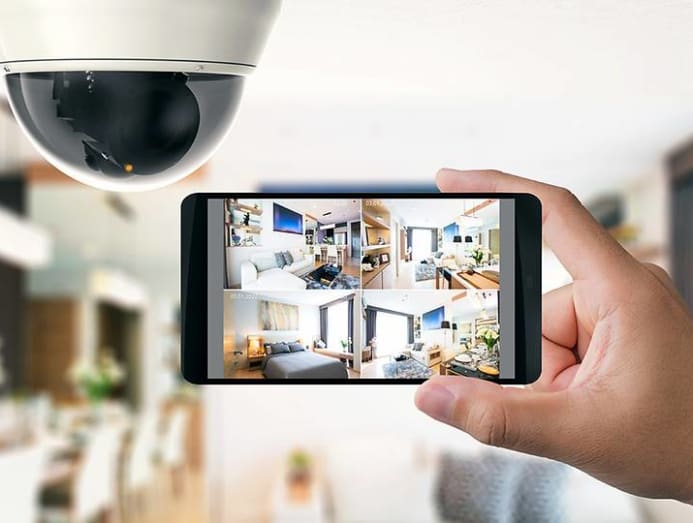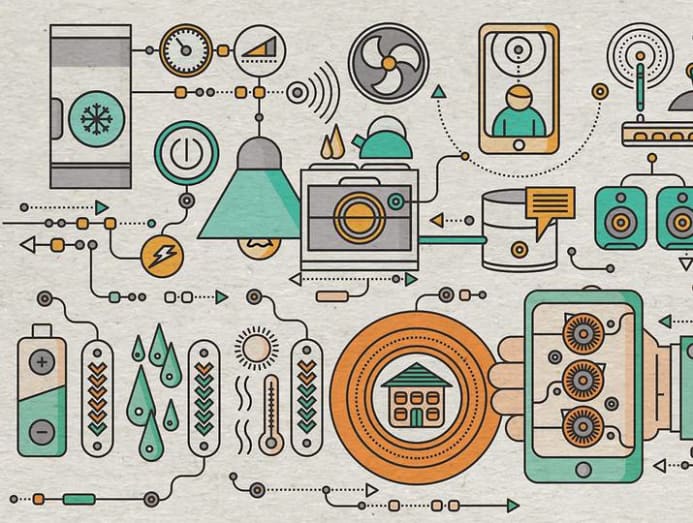Fearful of data breaches? Here are 4 ways to be IoT Smart with your connected devices
With data leaks becoming more common, safeguarding your privacy and security has never been more paramount, says Rajnesh Singh, Regional Director of the Asia-Pacific Regional Bureau at the Internet Society.

(Art: Jasper Loh)
Fitness trackers are an increasingly common gadget for sports enthusiasts, and more and more home appliances, including refrigerators, washing machines, litter bins, and baby monitors, among many others, are becoming connected to the Internet.
Internet-enabled devices promise to improve productivity, efficiency, and convenience, but it can put our security and privacy at risk, in ways we have never seen before. Research analyst firm Gartner predicts the number of connected things in use will hit 14.2 billion in 2019, and grow to 25 billion by 2021.
For most of us, the security of connected devices is probably a distant concern, but the risk they present is real and growing. In 2016, StarHub’s broadband services suffered two outages, and the telco attributed them to “cyberattacks on customers compromised web devices such as webcams and routers” according to a CNA report.
With investments in 5G ramping up in the Asia-Pacific and large-scale implementations in the pipeline, the sheer scale of the potential connected devices ecosystem could put our privacy and security at risk.
READ> Huawei launches ‘super camera smartphone’ P30 Series in Paris

To fully understand IoT security, it is first important to understand how it works.
All connected devices typically have three things in common: The device or sensor, the applications that support the device, and the backend or cloud services where the data is stored.
Hackers can exploit any potential vulnerabilities in each of these three areas, allowing them to virtually enter your home, monitor your conversations and even watch what you are doing. Unless you actively take your online security seriously, your private information – which could range from credit card and passport numbers to biodata – can be stolen.
How can consumers protect themselves while still making full use of the convenience and opportunities provided by smart devices?
There are a number of important things to consider, even before putting money down on a new piece of technology.

Know the support, warranty and privacy policies
Even before proceeding to the checkout, it is important to take the time to review a new device’s warranty and support policies, to verify that security and software patches will be provided for the lifetime of a product. Out-of-date software is like catnip to hackers.
If the manufacturer’s privacy practices seem suspect, for instance if you cannot opt out of sharing data with third parties, you should find something else. You should always be able to decide this for yourself, rather than having it dictated to you by a device company. Also, be sure always to register your devices with the manufacturer to be sent timely security updates.
READ> Samsung launches folding smartphone, first 5G handset
Change your password and be wary of Wi-Fi
Once you have your new device, take care to use unique username and password combinations that will not disclose either your identity or that of your device. Be sure you change login information regularly to reduce the threat of your device being targeted by hackers.
If possible, connect your device directly through a wired connection, since Wi-Fi is an easy target for data thieves. If your home router has a guest network, use it to isolate your devices from other networks in the house.
READ> Commentary: Facebook hack reveals the perils of using single sign-on login
Only download from legitimate websites and consider children-specific profiles
When downloading apps to your device, install them directly from the manufacturer's official site and review any permission requests you can find, such as location tracking and use of the camera and microphone.
Also, do not allow your connected device to be accessed remotely when this is not required, and ensure it is always guarded by a firewall. To protect your children who use the device, create user profiles with unique settings for them.
READ> Nudity, public sex, stalkers: What children are in for on live-streaming apps
Wipe the data and be wary of cameras
If you inherit one or more IoT devices after moving into a new house or unit, ensure you reset the privacy permissions for data collection and sharing. If you cannot change these, consider restoring your device to its factory settings to force a clean setup.
Likewise, if you are selling a connected device you were using, it’s important to reset it to wipe any saved data about you before you send it to its new home. Restoring the device to factory default settings is a good way to do this.
Cameras can be an issue as they can be controlled by a third-party without anyone realising it. To increase your privacy, disable any cameras or microphones when they are not in use. Some people like to remove the camera altogether; others prefer to cover its lens or point it at a wall.
There is currently no one standard approach that manufacturers take to improve IoT security, so it is important for consumers to avoid the security risks that connected devices bring. We should only buy devices from brands that respect privacy and security.
It is up to all of us to use our wallets and our voices to make device vendors and service providers take IoT security seriously.



